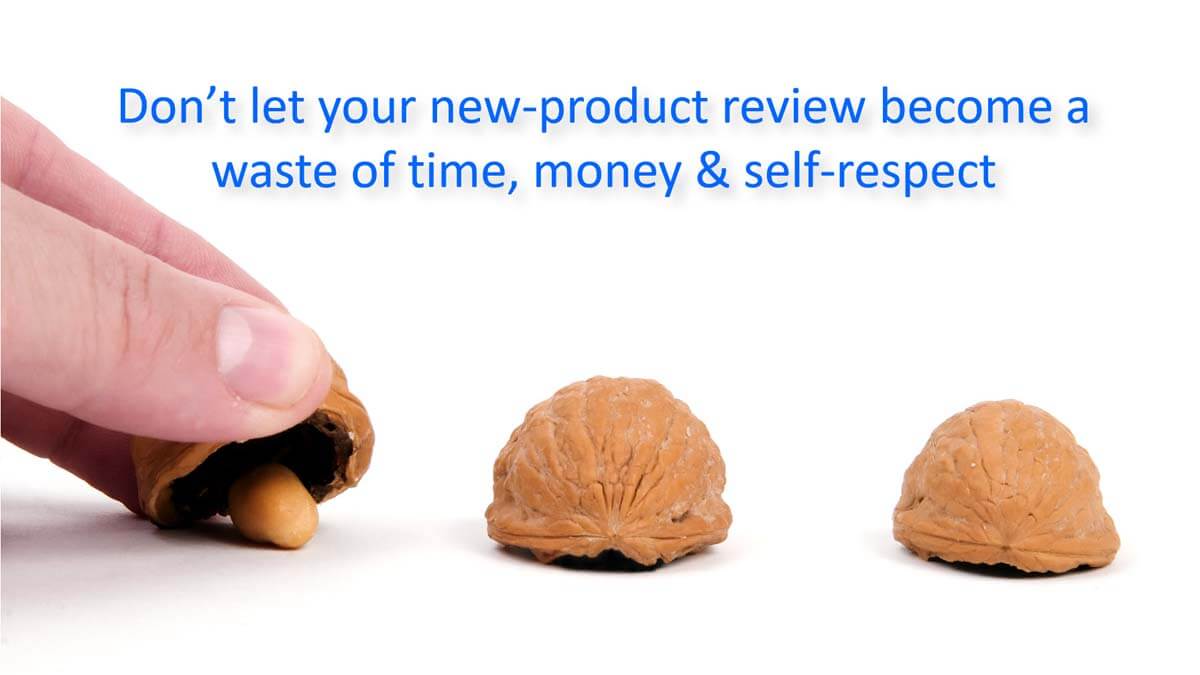For rapid, profitable, sustainable growth, your goal should be, “Understand and meet customer needs better than anyone else.” These 7 other common paths simply won’t work. Use AIM’s B2B Growth Diagnostic to benchmark your business against average, top quartile, and top decile companies on 25 growth drivers. ... Read More
Blog Category: Organic Growth
“Maximize shareholder value” is the pledge of allegiance recited in board rooms. It is a poor goal.
This mantra guides the decisions of the business masses. But is it right? Peter Drucker didn’t think so. He said the primary purpose of a business is to acquire and keep customers. I believe increased shareholder value is a good result, but a lousy goal. You’ll have better results if your goal becomes: “Understand and meet the needs of our customers.”
More in 2-minute video at 5. Shareholder wealth is a poor goal
The Executive’s Dilemma: Should the goal be to “Maximize Shareholder Value”?
These 5 points will convince you that "maximizing shareholder value" is the wrong goal for your company: 1) The underlying logic is failed. 2) Results don’t support this approach. 3) A good result can be a bad goal. 4) Employees need a higher calling. 5) A better goal is “understand and meet customer needs.” ... Read More
What Drives B2B Organic Growth? Now we know.
Want to drive rapid, profitable, sustainable growth at your company… and focus on what matters most? This original research taps over 10,000 years of combined experience from 540 B2B professionals. You’ll see which of 24 growth drivers they deemed the most important, and which they were most eager to improve. ... Read More
4 Steps to joining the Reliable Growth Club
Here’s the scene: You are a B2B business leader unhappy with your membership in the Shareholder Appeasement Club and its quarterly meetings. You want profitable, reliable growth so you are free to captain your ship, not some Wall Street analysts. But what should you do—not in the abstract—but in concrete, actionable steps? Before exploring admission ... Read More
Beyond Incremental New Products: Avoid the Commodity Death Spiral
Learn these six ways to avoid the Commodity Death Spiral that short-term-thinking business leaders fall into: 1) Take ownership of your future. 2) Measure your progress. 3) Change your time horizon. 4) Work on high-impact products. 5) Get out more. 6) Directly engage your customers. ... Read More
B2B vs B2C: Why B2B companies have advantages
When you consider B2B vs B2C, which market profession has greater advantages? Business schools offer more B2C courses, consumer research tools abound, and sophisticated marketers at B2C companies like Apple and P&G are held in high esteem. B2B marketers are often engineers or sales reps that were tapped on the shoulder and told to “do ... Read More
If you’re paying attention, you can’t miss the Innovation Wave.
About 100 books on innovation are now written weekly… and 100 times as many articles on innovation are now published as in the 1970’s. So if you haven’t noticed, you might not be paying close attention. You know… like General Motors and Chrysler weren’t paying attention to Toyota and the Quality Wave in the 1970’s.
The good news is that your competitors may still be focused on initiatives other than whole-hearted, market-facing innovation. Like Toyota in the Quality Wave, you create a competitive advantage by moving faster and harder on this. More in 2-minute video, Catch the innovation wave.
More in white paper, Catch the Innovation Wave
Beyond the Vitality Index: Two Metrics to Truly Assess Innovation Potential
For over 30 years, companies have used the Vitality Index. But this metric has shortcomings addressed by two new metrics from The AIM Institute: 1) The Growth Driver Index (GDI) measures how you are building your growth capabilities. 2) The Commercial Confidence Index (CCI) assesses your commercial risk on new product development. ... Read More
Profitable, sustainable organic growth makes it fun to go to work.
When you can count on profitable, sustainable organic growth, everything gets better. Employees have stable, rewarding careers. Industry-watchers admire your company. Customers want to work with you. Activist investors bother someone else. And it irritates competitors. What’s not to love?
But you have only one path to this type of growth. You must understand and meet customer needs better than others. How intense is your focus here? Is it greater than that of your competitors’? Or is your business distracted by other initiatives that can never deliver rapid, profitable, sustainable growth?
More in 2-minute video, Rethink your major initiatives
B2B Innovation Leadership – 10 Best Practices
B2B innovation leadership is more than stoplight charts and cost-cutting. To make a real difference a B2b leader will usher in a new era of customer-driven growth. It takes patience, courage, and a commitment to finding the best people and processes. Follow these 10 best practices to lead innovation and change for B2B organic growth. ... Read More
It’s Time for New Innovation Metrics
You’ve heard, “measure twice, cut once,” right? When it comes to market-facing innovation, most companies only measure after they’ve cut. They use the vitality index—a fine innovation metric developed by 3M in 1988 that’s simple to understand: percentage of gross revenue generated from products launched in the past three (or five) years. But if this ... Read More
Let’s stop the shell games at project reviews.
My golden rule of investment is, “Make your decision when you’ve gathered the most facts and spent the least money.” If you do it right, this point in time is the gate just before the costly development stage. Most companies are far too casual here, letting each team build and present its own unique PowerPoint slides. Human nature says teams will use these slides to talk about their project’s strong points, avoiding weak areas.
So management tries to guess what’s missing: “What about the competition? Are there more technical risks? Is the problem this? Is it something else?” This shell game is waste of time, money and self-respect. Better to have a standard business case everyone works from. Here’s a sample of an abbreviated business case called a Market Case: www.marketcasesample.com
More in 2-minute video, Build a front-end business case
Have you separated your “farm animals” from your “jungle animals”?
If you ran a zoo, you’d keep your jungle animals and farm animals in separate enclosures, right? Your technology development projects are untamed, jungle animals: You don’t completely understand them, and you’re not sure what they’ll do or where they’ll go next. Your product development projects are predictable farm animals. You know what they’re supposed to do, and who they’re supposed to do it for.
When you commercialize technology, you are “domesticating” wild animals for productive purposes. As a first step, you must be crystal clear which type of project your scientists or engineers are working on at any point in time. Remember, technology development turns money into knowledge; product development turns knowledge back into money. You can learn more from this white paper, Commercialize technology in 6 foolproof steps.
More in this 2-minute video, How to pursue transformational projects













